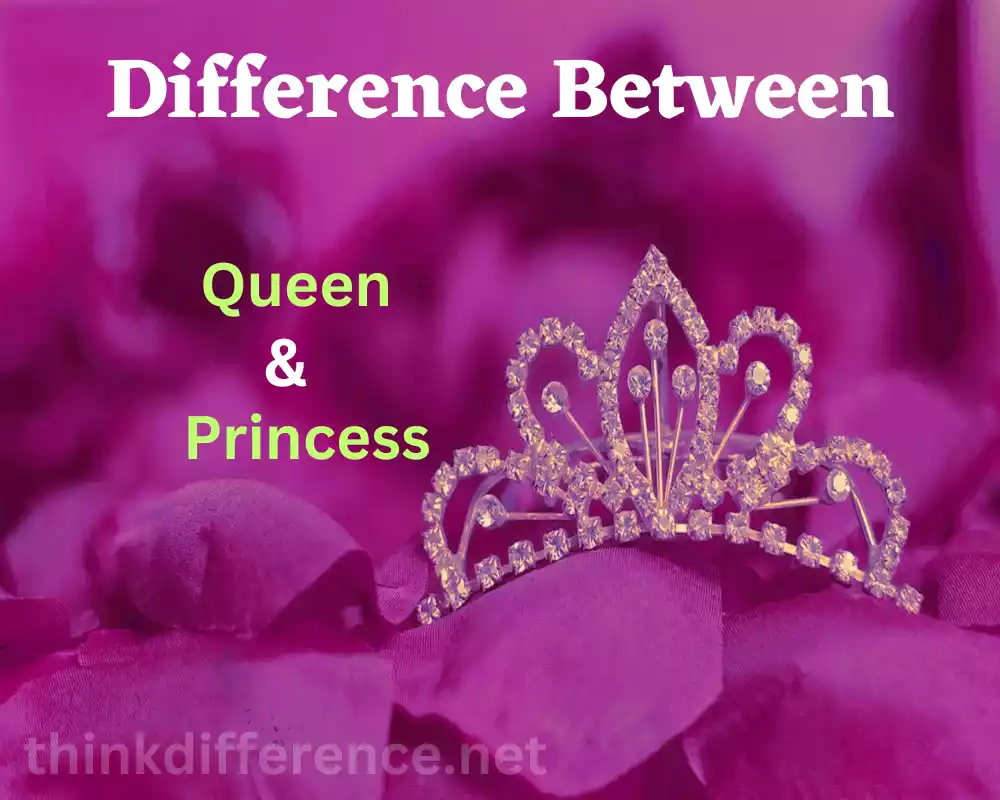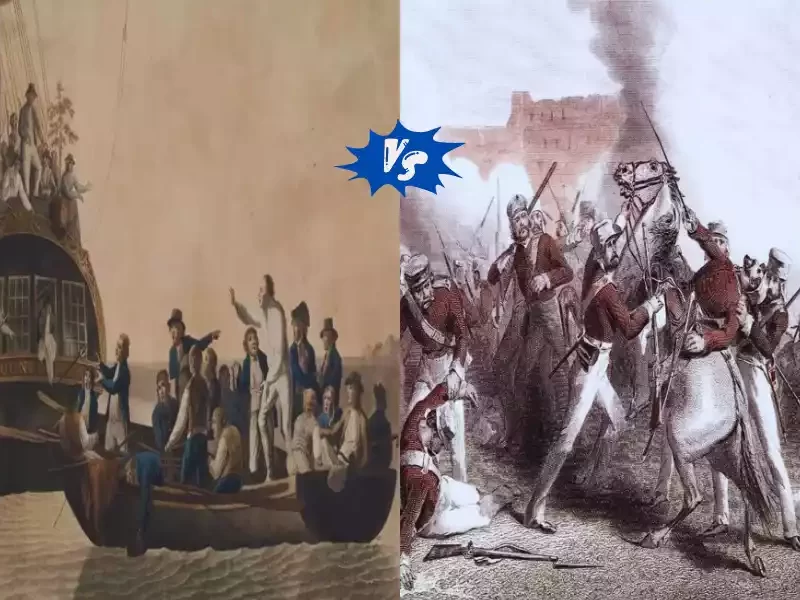Queens and princesses have long fascinated us with their grace, elegance and royal charm. They hold important positions in monarchies worldwide, captivating the imagination of people everywhere. We’ll look at the role and significance of princesses and queens/princesses within society today, their historical context as well as present-day relevance.
Definition of Queen and Princess
Queen:
A queen can be described as the ultimate monarchical leader who holds all authority within their respective monarchies or kingdom. She is typically the ruler of a sovereign state and often inherits her position through hereditary succession. A queen may also acquire her title through marriage to a king or by being appointed as queen regnant, meaning she rules in her own right without a king alongside her.
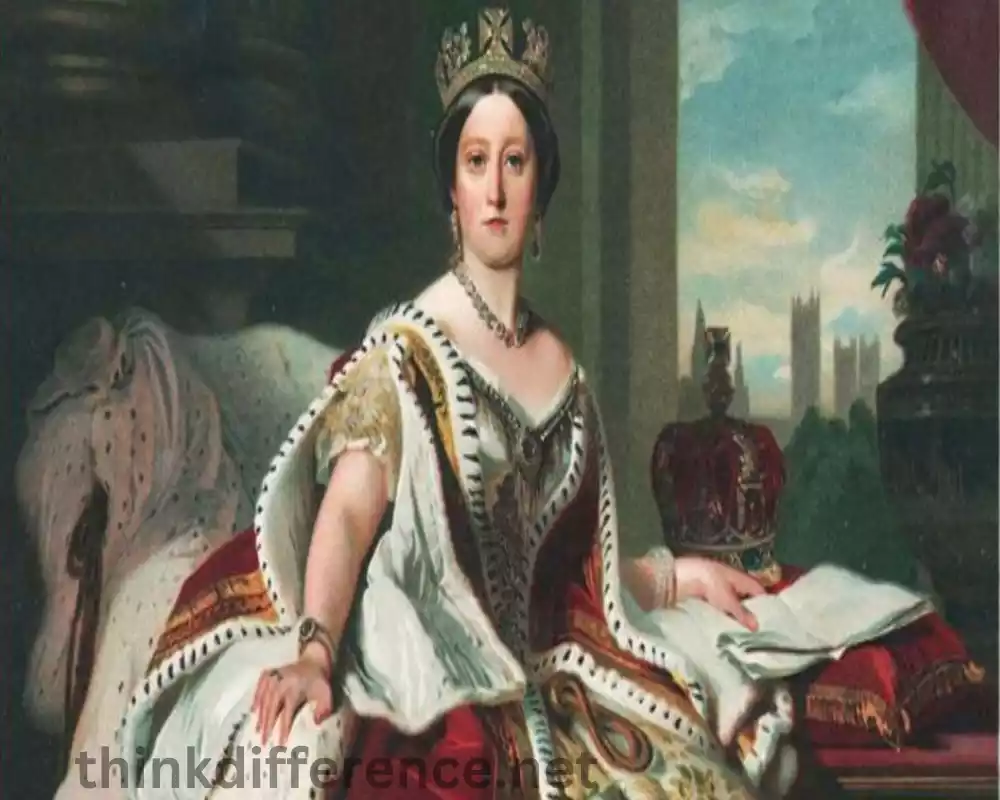
Queens are generally regarded as the highest-ranking members of the royal family and hold significant influence and responsibility. Their roles can vary depending on the specific monarchy and its constitutional arrangements. While some queens have purely ceremonial duties, others actively participate in governance, policy-making and representational functions.
Queens often serve as symbols of national identity and continuity, embodying the traditions and values of their respective nations. They may engage in diplomatic activities, attending state functions and official ceremonies both domestically and abroad. Queens also frequently take on patronage roles, supporting charitable organizations and social causes and may act as ambassadors for their countries.
Queens from history have had an enormous effect on shaping history’s course, altering political landscapes and having lasting ripple effects upon culture and society. Their power and authority can extend beyond their reigns, with their legacies often remembered for generations to come.
Princess:
Princess is an honorific term applied to female members of royal families, usually the child or heir of either monarchs or queens or both. She holds a noble title by birthright and is often considered a member of the higher aristocracy. Princess terms and conditions will differ across monarchies and contexts.
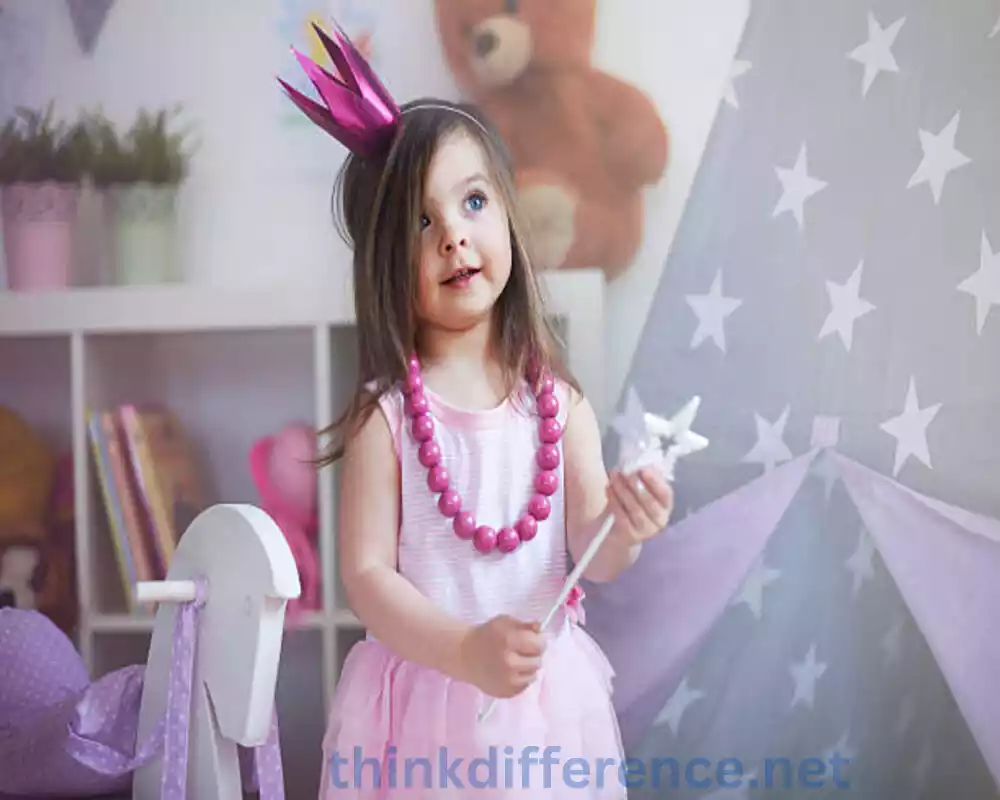
Princesses are often associated with youth and are commonly seen as the younger generation within a royal family. They may have specific roles and responsibilities within the family, such as preparing for future leadership or representing the monarchy in public events. The specific duties and expectations placed upon a princess can differ depending on the traditions, customs and rules of her particular royal household.
A princess may also acquire her title through marriage to a prince or another member of the nobility. When a princess marries, she may assume a different noble title, such as queen consort if her husband becomes a king or she may retain her princess title alongside her husband’s rank.
Princesses often have a public presence and may engage in charitable endeavors, participate in diplomatic functions or act as ambassadors for their country. They can also be influential figures in fashion, culture and society due to their visibility and status. A princess may exert influence and be involved in different ways depending on various factors, including her place in succession and family customs and traditions.
Princess is an elite position within any royal family, serving to uphold traditions, heritage and future generational continuity. While she cannot exert as much authority as a queen would do, princess can make an invaluable contribution towards building up and perpetuating the royal lineage she belongs to.
Importance of understanding the differences between Queen and Princess
Knowing the distinctions between princess and queen princess are vitally important, for various reasons:
- Clarity in Roles and Responsibilities: Recognizing the distinctions between queens and princesses helps clarify their respective roles and responsibilities within the royal hierarchy. Queens typically hold a higher position of authority and have specific duties associated with governing and leading a nation, while princesses may have more limited or ceremonial roles. Understanding these differences allows for a better understanding of their contributions and functions within the monarchy.
- Historical and Cultural Context: Examining the distinctions between princesses and queens provides valuable insight into the historical and social antecedents of various monarchies. Each monarchy has its own traditions, rules of succession and expectations for queens and princesses. Exploring these differences helps deepen our understanding of the various royal systems and the significance of titles and positions within them.
- Societal and Symbolic Impact: Queens and princesses often serve as symbols of national identity and continuity. Flags embody tradition, values and aspirations from each nation they represent. Understanding the distinctions between a queen and a princess helps in appreciating their societal impact and the symbolism associated with their roles. It sheds light on their influence in shaping public perception, national unity and cultural heritage.
- Gender Dynamics and Equality: Examining the differences between queens and princesses also offers insights into gender dynamics within monarchies. Historically, queens have faced unique challenges and expectations based on their gender. By understanding these differences, we can evaluate the progress made in terms of gender equality within royal institutions and assess the evolving roles and rights of women in positions of power.
- Interpretation of History and Literature: Differentiating between queens and princesses is crucial for interpreting historical accounts, literature and art that feature these figures. Knowing the specific titles, roles and attributes associated with queens and princesses allows for a more accurate analysis and appreciation of narratives and representations in various forms of media and creative expression.
Understanding the differences between princesses and queens provides valuable insight into monarchies’ structure within cultural, historical and gender dynamics as well as effects of these roles within society. We gain better insight into their importance both historically and currently for better appreciation of titles borne by those holding them and those they hold them themselves.
The Role of a Queen
The role of a queen encompasses a range of responsibilities and functions, which can vary depending on the specific monarchy and its constitutional arrangements.
Here are some key aspects of the role of a queen:
-
- Head of State: Constitutional monarchies typically feature queen as ceremonial head of state. While her role may be mostly symbolic, she represents the unity and continuity of the nation. The queen’s presence at official ceremonies, state visits and national events symbolizes the sovereignty and identity of the country.
- Symbolic and Ceremonial Duties: Queens play an important role in upholding and embodying the traditions, values and cultural heritage of their nation. They perform ceremonial duties such as the opening of parliament, the bestowal of honors and awards, and the representation of the monarchy on official occasions. Their presence and participation in such events contribute to the sense of national pride and cohesion.
- Representation and Diplomacy: Queens often engage in diplomatic activities, representing the country on a global scale. They may receive and host foreign dignitaries, attend international events and participate in state visits to strengthen diplomatic relations and promote cultural exchange. The queen acts as a symbol of continuity and stability in international relations.
- Patronage and Charitable Work: Queens often take on patronage roles, supporting and promoting charitable organizations, social causes and cultural initiatives. Use of Influence/Platform They use their influence and platform to raise awareness, raise funds and lobby on various issues including health, education, environmental conservation and social welfare. Their involvement in philanthropy helps shine a light on important societal issues.
- Influence on Governance and Politics: In some monarchies, queens may have an advisory role in governance and political matters. They may hold regular meetings with the prime minister or other government officials to stay informed about the state affairs and offer counsel. While the extent of their influence can vary, queens can contribute to decision-making processes and provide a unique perspective based on their experience and status.
- Unifying Figure: Queens serve as unifying figures, fostering a sense of national identity and continuity. They embody the traditions, values and history of their nation, providing a sense of stability and continuity across generations. At times of national celebration or crisis, her actions and words can have a galvanizing effect; uniting all citizens while providing hope and comfort to the masses.
- Historical and Cultural Legacy: The role of a queen extends beyond her reign. Queens leave a lasting historical and cultural legacy through their actions, initiatives and impact on society. Their contributions to the arts, fashion, literature and social progress can shape the cultural landscape and inspire future generations.
Understanding that a queen is determined by factors like constitution, tradition and expectations within any monarchy is of great significance. The specific functions and level of involvement may vary among queens throughout history and across different countries.
The Journey of a Princess
The journey of a princess typically involves several key stages and experiences. Although specific details will depend upon monarchy and individual circumstances, following is an outline of her journey:
-
- Birth and Early Life: Princesses typically belong to royal families or act in some capacity as daughters of royalty or as successors of monarchy. From a young age, she is raised within the royal household, surrounded by traditions, customs and protocols. She receives an education that includes academic subjects, cultural studies, etiquette and preparation for her future role.
- Public Introduction: As a princess grows older, she starts to make public appearances and engagements. These can range from attending charity events, cultural activities and official ceremonies to representing the royal family on diplomatic visits. At this point, the princess is becoming acquainted with all of the roles she’ll soon assume in life.
- Education and Development: Princesses often receive a well-rounded education that prepares them for their future responsibilities. This may include further studies at prestigious institutions, language training and specialized training in areas such as diplomacy, leadership and philanthropy. The princess may also be encouraged to explore various interests and engage in activities that promote personal growth and development.
- Royal Duties and Responsibilities: As a princess matures, she takes on more substantial roles and responsibilities within the royal family. This can involve participating in official engagements, supporting charitable causes and representing the monarchy both domestically and internationally. The princess begins to establish her own identity and style while adhering to the traditions and expectations of her royal status.
- Marriage and Family: For some princesses, the journey includes marriage to a prince or another member of nobility. This union may strengthen diplomatic ties, forge alliances between countries or carry on dynastic traditions. The princess assumes a new role as a wife and potentially a mother, contributing to the continuation of the royal lineage.
- Potential Ascension: Depending on the line of succession and the monarchy’s rules, a princess may eventually have the opportunity to ascend to the throne as queen regnant. This can occur upon the death, abdication or retirement of the reigning monarch. The princess’s journey transitions into a new phase as she assumes the highest position of power and responsibility within the monarchy.
- Legacy and Impact: Throughout her journey, a princess leaves a lasting impact on society and the royal family. Her actions, initiatives and involvement in charitable work can shape public perception, inspire positive change and contribute to the cultural legacy of the monarchy. Her influence may extend beyond her reign, as she becomes a symbol of grace, elegance, and service.
Understanding that princesses’ lives and careers depend heavily upon the traditions, rules and expectations set out by their royal families is of crucial importance for their development as individuals and members of royal households alike. The experiences and opportunities may differ based on factors such as the constitutional arrangements, cultural norms and the personal choices made by the princess herself.
Comparison table of Queen and Princess
Here’s a table that compares and contrasts two titles held by women – queen and princess:
| Aspect | Queen | Princess |
|---|---|---|
| Position | Holds the highest position of power within the monarchy | Holds a lower rank and is a member of the royal family |
| Inheritance | Inherits the throne through birthright or succession | Does not automatically assume the throne |
| Authority | Holds governing authority and decision-making powers | Does not have the same level of governing authority |
| Titles | Addressed as “Queen” or “Queen [Name]” | Addressed as “Princess [Name]” or may have additional titles |
| Role in Succession | Ensures the continuation of the monarchy and smooth succession of power | May play supporting roles in the line of succession |
| Scope of Influence | Has a wider scope of influence, both within the country and on the international stage | Has a more limited sphere of influence |
| Responsibilities | Has significant political and constitutional responsibilities | Focuses on ceremonial and representative roles |
| Role in Governance | Makes decisions and governs the affairs of the monarchy and state | Does not have the same level of governing authority |
| Example | Queen Elizabeth II of the United Kingdom | Princess Victoria of Sweden |
The Queen and Princess Relationship
Relationships between Queens and princesses depend upon each of their roles, personalities, and the dynamics within the Royal Family.
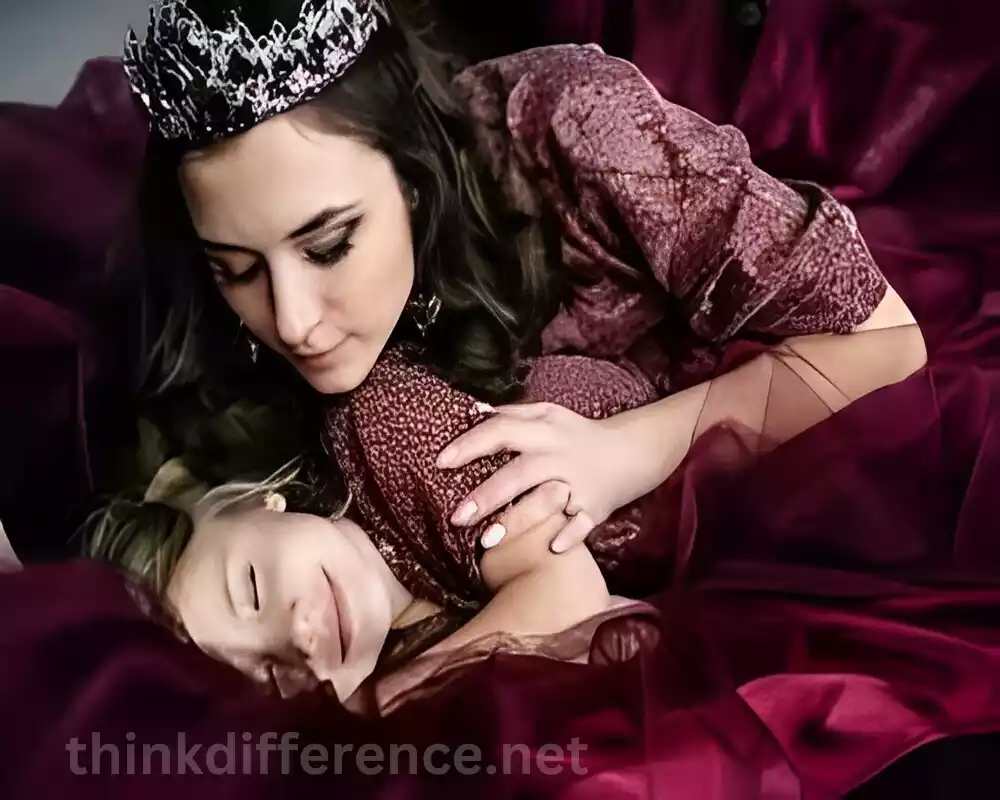
Here are key aspects of Queen-Principal relations:
- Mother and Daughter: The queen is the mother of the princess. This relationship adds a unique dynamic to their interactions, combining their roles within the royal family with the bond of family and affection. The queen may provide guidance, support and mentorship to the princess as she navigates her royal duties and prepares for her future role.
- Mentorship and Training: The queen often plays a crucial role in mentoring and training the princess, sharing her wisdom, experiences and knowledge of royal protocols and traditions. She may provide guidance on public engagements, diplomatic protocols and the expectations of being a royal figure. The queen’s expertise and experience can be instrumental in shaping the princess’s understanding of her role and responsibilities.
- Passing Down Traditions and Values: The queen has the responsibility of passing down the traditions, values and cultural heritage of the monarchy to the princess. She instills the princess with an awareness of obligation, respect and continuity from Royal family ideals and customs. The queen imparts lessons on etiquette, public service and the importance of representing the monarchy with grace and dignity.
- Collaboration and Support: Queens and princesses often collaborate and support each other in their respective roles. The queen may involve the princess in official engagements, allowing her to gain practical experience and exposure. The princess, in turn, can provide assistance to the queen in various duties, serving as a trusted representative and ambassador for the monarchy. They may work together on charitable initiatives, social causes and public events.
- Transition of Power: In some instances, the queen’s relationship with the princess involves preparing her for the future transition of power. As the queen nears the end of her reign, she may involve the princess in more significant state functions and decision-making processes, gradually preparing her to assume greater responsibilities. This transitional phase allows for a smooth succession and continuity within the monarchy.
- Support and Guidance in Personal Life: The queen may also provide support and guidance to the princess in her personal life. She can offer advice on matters such as marriage, family and public scrutiny. The queen’s own experiences and understanding of the challenges faced by a royal figure can be invaluable in helping the princess navigate the demands of her personal and public life.
- Unconditional Love and Family Bond: The relationship between a queen and a princess is rooted in love and family. They share a familial bond that extends beyond their royal duties. The queen serves as a source of love, protection, and emotional support for the princess, providing a safe haven amidst the pressures of royal life.
Remember that each queen and princess relationship varies according to individual personalities as well as monarchical customs. Each queen and princess may have a unique dynamic shaped by their personalities, circumstances and the expectations of their respective roles.
Impact and Influence
The impact and influence of both queens and princesses can be significant and far-reaching.
Here are some key aspects of their impact and influence:
- Symbolic Representation: Queens and princesses serve as symbols of their nations and the monarchy itself. Their presence and actions can evoke a sense of national pride, unity and stability. They embody the traditions, values and cultural heritage of their countries and their influence extends beyond their individual roles.
- Soft Power and Diplomacy: Queens and princesses often engage in diplomatic activities and represent their nations on the global stage. Their involvement in international events, state visits and diplomatic functions can strengthen diplomatic ties, promote cultural exchange and enhance the country’s soft power. Interactions and presence among foreign leaders could potentially have an effect on international relationships.
- Advocacy and Philanthropy: Queens and princesses often use their platform and influence to advocate for social causes, raise awareness about important issues and support charitable organizations. Their involvement in philanthropic endeavors can bring attention to pressing societal problems, mobilize resources and inspire positive change. Their support and endorsement can significantly impact the success and visibility of charitable initiatives.
- Cultural Influence: Queens and princesses are often trendsetters in fashion, style, and culture. Their fashion choices, patronage of the arts and participation in cultural events can have a significant impact on popular culture and the fashion industry. They set trends, promote designers and showcase the cultural richness of their nations, thereby influencing public taste and preferences.
- Inspiration and Role Models: Queens and princesses can serve as powerful role models, especially for young girls and women. Their achievements, grace and determination can serve as an example for others to pursue their passions, overcome challenges and have an impactful presence in their communities. They exemplify qualities such as leadership, compassion, and dedication and their stories can empower and motivate individuals across generations.
- Historical Legacy: The impact of queens and princesses can extend beyond their own lifetimes. Their actions, initiatives and contributions shape the historical narrative and cultural legacy of their nations. Their reigns and accomplishments become part of the historical record and influence how future generations perceive and understand their countries’ past.
- Modernizing and Humanitarian Initiatives: Queens and princesses have been catalysts for modernization and social progress in some monarchies. Women have played an instrumental role in advocating for women’s rights, healthcare access and other forms of change within society. With their voices alone they can raise awareness on pressing societal concerns while working toward positive transformation within communities worldwide.
Be mindful that princesses and queens’ influence depends on a number of variables, including their place in succession lines, political climate and local rituals and customs of monarchies they reside under. Their figurehead or ambassador roles allow them to shape culture, society and national identities through influence on national characters of countries they govern.
The Queen and Princess in Modern Society
Today’s society demands different roles of princesses and queens than previously existed in order to adapt to changing political, social and cultural environments.
Here are some essential features of their current roles as royalty:
- Symbolic Figureheads: Queens and princesses continue to serve as symbolic figureheads, representing the monarchy and their nations. Their presence and engagement in public events and ceremonies maintain a sense of continuity and tradition. They embody the values and identity of their countries and provide a sense of stability and unity.
- Charitable Work and Advocacy: In modern society, queens and princesses are actively involved in charitable work and advocacy for various social causes. They leverage their platform and influence to raise awareness, encourage initiatives, and advocate for topics like healthcare, education gender equality environmental conservation as well as mental wellbeing. Their involvement in these areas helps bring attention to important societal issues and mobilizes resources for positive change.
- International Diplomacy and Cultural Exchange: Queens and princesses play a crucial role in international diplomacy and cultural exchange. They participate in state visits, attend international events, and engage in diplomatic activities to strengthen bilateral relations, promote trade and foster cultural understanding. Their presence and interactions with foreign leaders contribute to building diplomatic bridges and enhancing global cooperation.
- Modernizing the Monarchy: Queens and princesses are often at the forefront of modernizing the monarchy to adapt to the expectations and demands of modern society. They may introduce changes in royal protocols, engage with the public through social media, and adopt a more relatable and accessible approach to their roles. This helps to maintain relevance and appeal to a diverse and changing society.
- Women’s Empowerment and Equality: Queens and princesses can serve as strong advocates for women’s empowerment and gender equality. They can challenge gender norms, support initiatives that promote equal rights and opportunities for women and inspire others through their own achievements and leadership. Their positions as influential women in society can inspire progress and change in gender dynamics.
- Global Celebrity and Influence: In the age of media and globalization, queens and princesses have become global celebrities and influencers. Their fashion choices, lifestyle and personal stories attract international attention and media coverage. They can leverage their global influence to support charitable causes, promote cultural exchange and raise awareness about important issues on a global scale.
- Role Models for the Younger Generation: Queens and princesses serve as role models for the younger generation, particularly for girls and young women. Their achievements, grace and philanthropic efforts serve as inspiration to young people to pursue their interests, participate in public service efforts and leave lasting impacts in their local communities. They embody qualities such as leadership, resilience and compassion, setting an example for future generations.
It is important to note that the roles and impact of queens and princesses in modern society can vary depending on the specific monarchy, its constitutional arrangements and the individual’s personal choices and initiatives. They remain vital components of society due to their adaptability in an ever-evolving world, making significant contributions towards its betterment.
Conclusion
Queens and princesses have always been an integral part of history and culture. Their stories inspire and captivate us, showcasing their resilience, strength, and grace in the face of challenges. As the world evolves, so do their roles, making way for modern queens and princesses who continue to leave a lasting impact on society.

